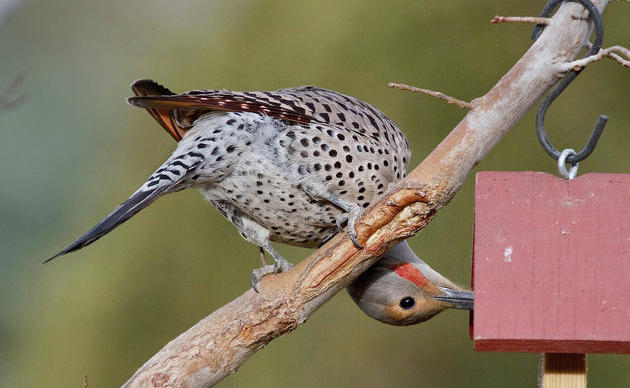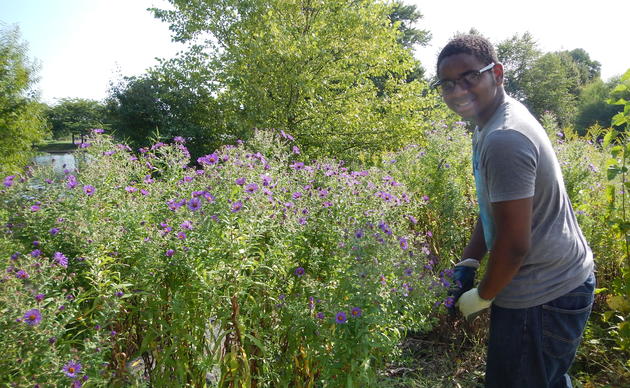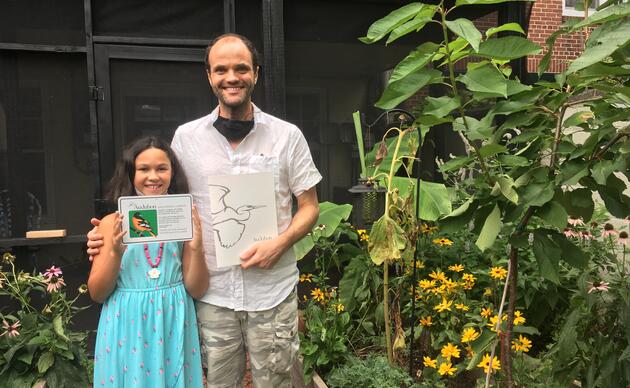Your Tiny Tots (ages 2-5) can learn some of the characteristics and behaviors of reptiles and meet some live reptiles that are native to Maryland, while playing a game and making a craft!
You will need:
- Reptile Charades cards (download below)
- turtle craft: paper bowl, tissue paper and/or recycled paper, glue, scissors, googly eyes or a pen/marker to draw on eyes
- snake craft: paper plate, tissue paper and/or recycled paper, glue, scissors, googly eyes or a pen/marker to draw on eyes
Print out the Reptile Charades cards:
Let your child pick a card and act out the reptile on that card. They are not allowed to speak, but they can make noises like the animal! Act out as many cards as you like!
Make a turtle or reptile craft, using materials you have at home! First, assemble your materials for the craft: You’ll need a paper bowl to make a turtle (or there are many other materials you could use – an egg carton cup, or glue buttons on an old CD – be creative!), and/or a paper plate to make a snake. For scutes/scales, you will need paper cut or torn into roughly ½ inch squares – tissue paper looks nice, but any paper will do – even recycled paper. You will need scissors, glue, and googly eyes (or a pen/marker to draw eyes). For a turtle, you’ll need six pieces of paper cut into a U shape – one large U for a head, one small U for a tail, and four medium U’s for legs. For a snake, you’ll need one piece of paper cut into a tongue shape.
Allow your child to glue their paper scutes/scales onto the paper bowl/plate, by applying glue to the outside or bottom of the paper bowl/plate and sticking on the pieces of paper. Allow it to fully dry.
For a turtle, then glue the largest U-shaped piece of paper to the underside of the bowl for the turtle’s head, the smallest U-shaped piece of paper to the opposite end for the turtle’s tail, and then two medium U-shaped pieces of paper on each side for the turtle’s four legs. Finally, glue googly eyes or draw eyes onto the head.
For a snake, cut the plate into a spiral, as demonstrated in the video. The very center of the spiral is the snake’s head – glue on the tongue-shaped piece of paper and glue or draw on eyes.
Check out these cool videos of some reptiles and amphibians. Ask your child if they know the difference between reptiles and amphibians. Reptiles and amphibians are both cold-blooded, both lay eggs, are both vertebrates (they have backbones), are both mostly predatory/carnivorous (eat animals/meat) and live in lots of different habitats. But the word “Amphibian” means “both kinds of life” – amphibians undergo a metamorphosis (like changing from a tadpole to a frog) and reptiles do not. Also, amphibians have smooth, sticky, usually moist skin while reptiles have dry, hard skin with scales or scutes!
Click here for books about reptiles read aloud on YouTube!
Click here for more reptile crafts on Pinterest!
~~
Los niños aprenderán algunas de las características y comportamientos de los reptiles y conocerán a algunos reptiles vivos que son nativos de Maryland, mientras juegan un juego y hacen una manualidad.
Materiales:
- Tarjetas de Juego de Reptiles
- Manualidad de la tortuga: plato hondo de papel, papel regalo y/o papel reciclado, pegamento, tijeras, ojos de plástico o un bolígrafo/marcador para dibujar en los ojos
- Manualidad de serpiente: platode papel, papel regalo y/o papel reciclado, pegamento, tijeras, ojos de plástico o un bolígrafo/marcador para dibujar en los ojos
Imprimir y cortar las Tarjetas de Juego de Reptiles:
Deje que su hijo escoja una tarjeta y actúe como el reptil en esa tarjeta. ¡No pueden hablar, pero pueden hacer ruidos como el animal! ¡Actúa tantas cartas como quieras!
Junta tus materiales para la manualidad: Usted necesitará un plato hondode papel para hacer una tortuga (¡o hay muchos otros materiales que podría utilizar -una taza de cartón de huevos, o botones de pegamento en un viejo CD - ser creativo!), y / o una platodepapel para hacer una serpiente. Para los escudos/escamas, necesitará cortar papel o arrancarloen cuadrados de aproximadamente una pulgada –el papel para regalosse ve bien, pero cualquier papel lo hará, incluso papel reciclado. Necesitará tijeras, pegamento y ojos de plastico (o un bolígrafo /marcador para dibujar los ojos). Para una tortuga, necesitarás seis trozos de papel cortados en forma de U: una U grande para una cabeza, una U pequeña para una cola y cuatro U medianas para las piernas. Para una serpiente, necesitarás un pedazo de papel cortado en forma de lengua.
Permita que su hijo pegue sus escudos/escamas de papel en el recipiente/plato de papel, aplicando pegamento en elexterior o en la parte inferior del recipiente/platode papel y pegando en los pedazos de papel. Deje que se seque por completo.
Para una tortuga, luego pegue el pedazo de papel en forma de U más grande a la parte inferior del tazón para la cabeza de la tortuga, el pedazo de papel en forma de U más pequeño en forma de U en el extremo opuesto para la cola de la tortuga, y luego dos trozos medianos de papel en forma de U a cada lado para las cuatro patas de la tortuga. Finalmente, pega los ojos de plástico o dibuja los ojos en la cabeza.
Para una serpiente, cortar el platoen una espiral, como se muestra en el video. El centro mismo de la espiral es la cabeza de la serpiente -pegamento en la hoja de papel en forma de lengua y pegamento o dibujar en los ojos.
Echa un vistazo a estos videos geniales de algunos reptiles y anfibios. Pregúntele a su hijo si sabe la diferencia entre reptiles y anfibios. Los reptiles y los anfibios son ambos de sangre fría, ambos huevos laicos, ambos vertebrados (tienen espinas dorsales), son en su mayoría depredadores /carnívoros (comer animales/carne) y viven en muchos hábitats diferentes. Pero la palabra "Anfibio" significa "ambos tipos de vida" – los anfibios sufren una metamorfosis (como cambiar de un renacuajo a una rana) y los reptiles no lo hacen. Además, los anfibios tienen piel lisa, pegajosa, por lo general húmeda, ¡mientras que los reptiles tienen la piel seca y dura con escamas o escamas!
¡Haga clic aquí para ver libros sobre reptiles leídos en voz alta en YouTube!
¡Haz clic aquí para obtener más artesanías de reptiles en Pinterest!




